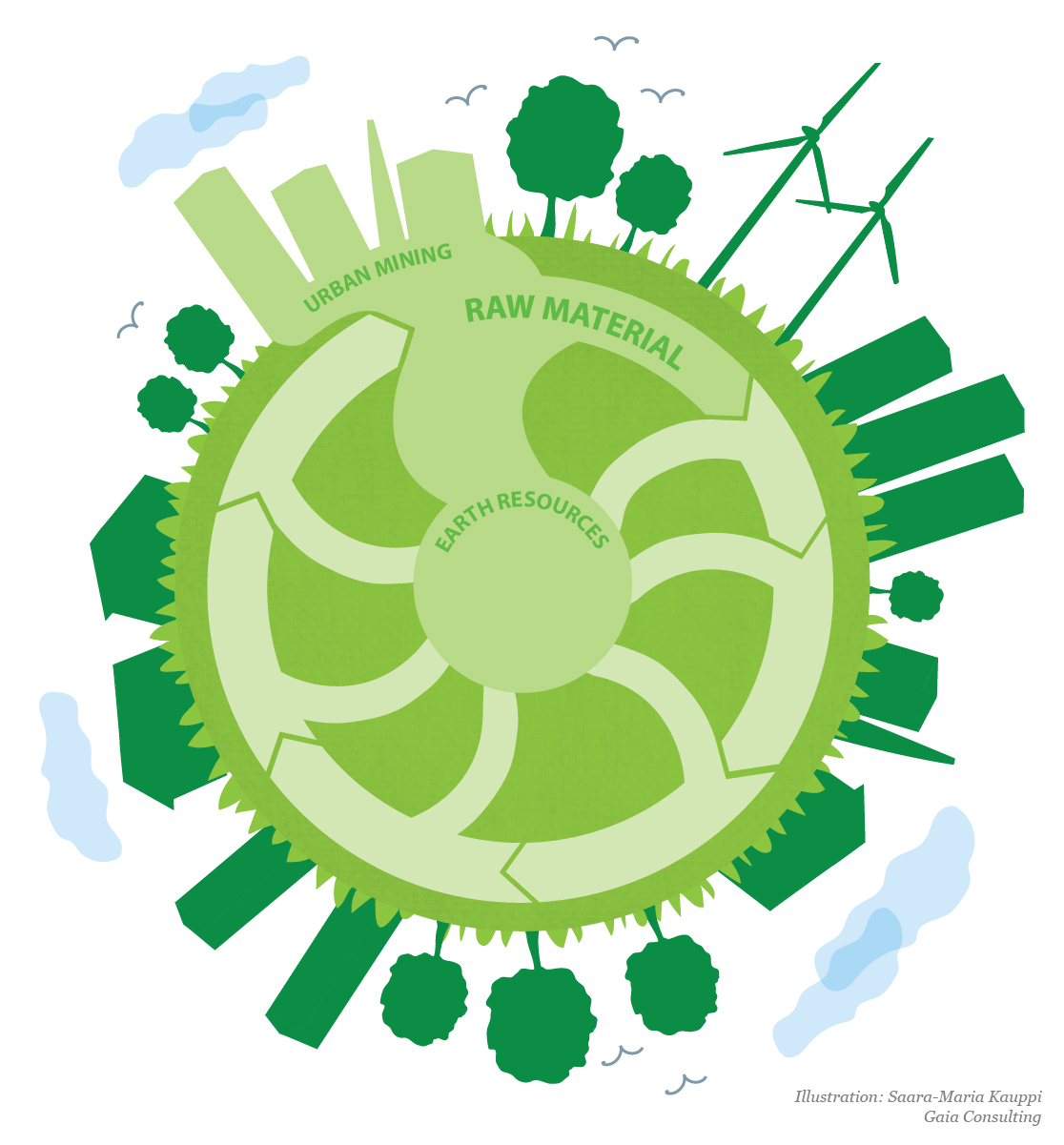Can we generate products, materials and services efficiently by minimizing the use of raw materials and by decreasing losses and low-value side streams? How well and how long does a product or material serve in its intended function and what kind of impacts does it have during its lifetime? How about after its life cycle? Can it be reused? Is it economically viable to repair? Can it be easily recycled? Can different materials and parts of the product be recovered cost-effectively?
There’s one common denominator to solving all these questions, and it’s called circular design. Traditionally design is based on what sells, for example the product itself or its packaging. What does circular design mean? Firstly, it means designing products and services that work well in their intended function and have minimal negative and maximal positive impacts during their life cycle. Secondly, it means understanding the importance of choosing the right raw materials and assembling products with their end-of-life possibilities in mind. Thirdly, circular design aims to improve resource productivity along the whole life cycle ensuring that value chains are efficient and all synergy possibilities are taken into account.
Products should be durable and easy to maintain and repair. Their upgradability and compatibility with other products and systems help to extend their life. In order to recover materials effectively, the recyclability of a product has to be considered already in the design phase. Many metals, for example, can be recycled if a product has been designed in a way that enables disassembling its materials and prevents their contamination with other materials. A well-planned recycling or recovery infrastructure ensures that materials circle efficiently back to use.
Does circular economy make resource efficiency seem old-fashioned? Not at all – resource efficiency means making more from less by minimizing raw material, energy and water usage, by decreasing losses and low-value side streams, by designing out waste while simultaneously increasing the efficiency of production. These are all in the DNA of circular economy. An effective flow of materials, energy and information leads to significant economic benefits. Even more value lies in understanding the wider perspective of resource use and optimizing the location of production accordingly. This wider perspective includes resource substitutability and co-production as well as predicting the availability of resources. Simply put, the tighter the circle of materials in distance and time, the greater the cost savings.
The possibilities of circular economy are based on synergies. Synergies vary depending on the products and services in question, and can range from consumers sharing systems to closed production loops within a company and industrial symbioses between large enterprises, SME’s or start-ups, just to mention a few. Secondary raw material streams may offer new possibilities for the primary business or for another company. The higher the value of the stream, the better its transportation possibilities and the easier it is to close the loop.
Designers have remarkable opportunities to drive the transition to circular economy. The old way of focusing design on the product itself, its packaging and marketing, is simply not enough anymore. Circular design is challenging and requires not only a new kind of system thinking but also open and active dialogue between designers, suppliers, industry end users and consumers. Various methods and practical tools, such as Life Cycle Assessment, as well as different circular economy indicators and indicator frameworks, for example Gaia Refiner benchmarking tool, can help in circular design by offering transparent information about the life cycle of materials and processes. The current linear design structure will sooner or later be a thing of the past.
Maija Aho
Business Manager Maija Aho specializes in circular economy, resource efficiency, industrial symbioses, clean processing technologies and sustainable use of natural resources.

